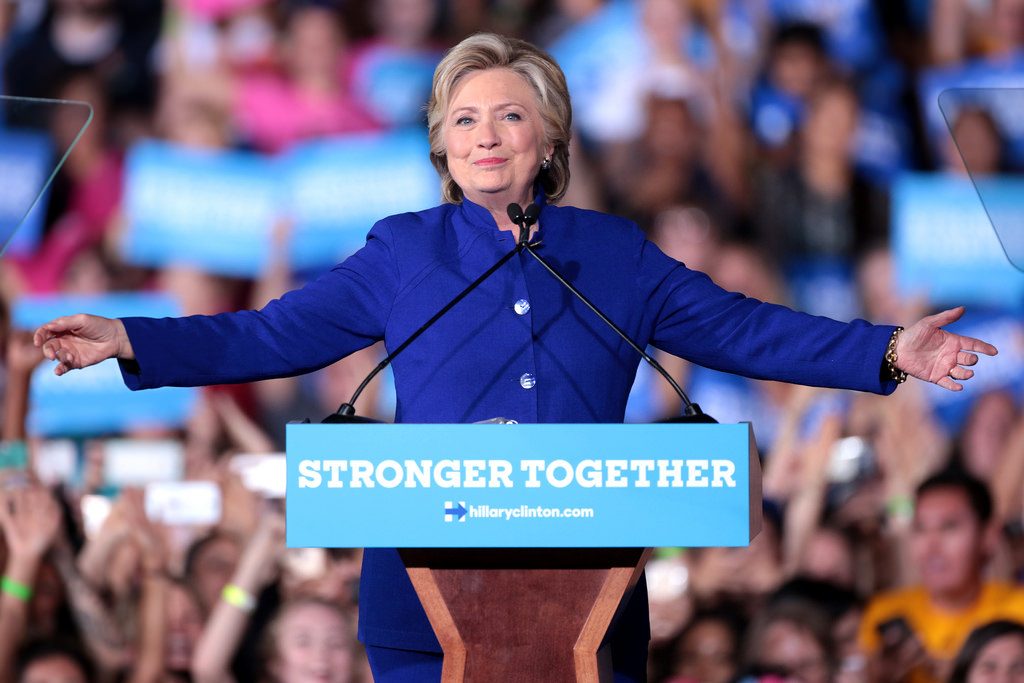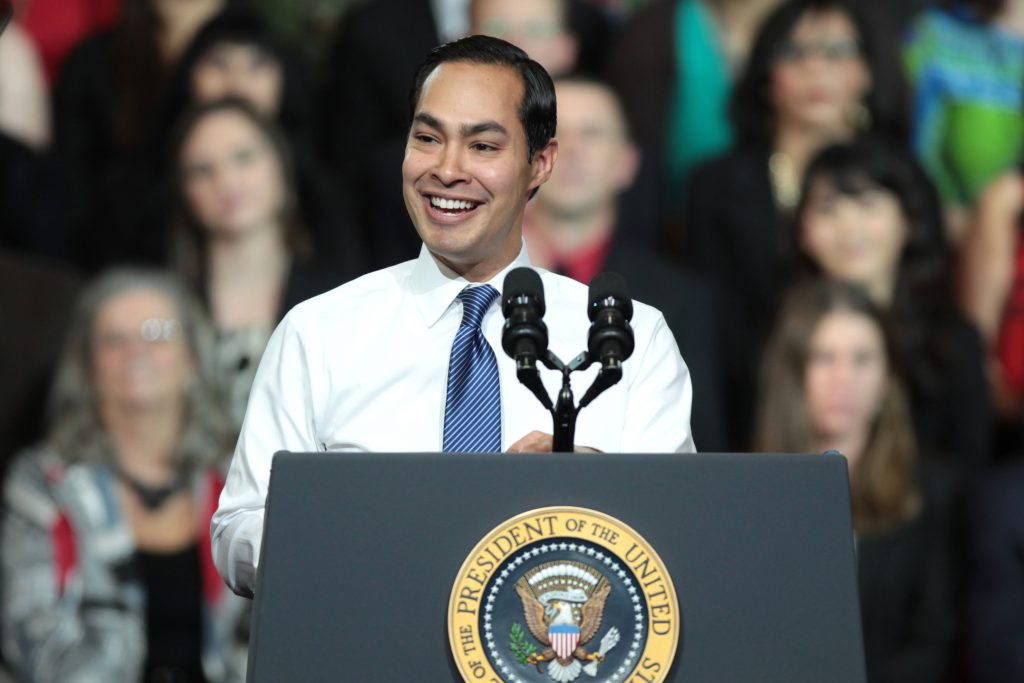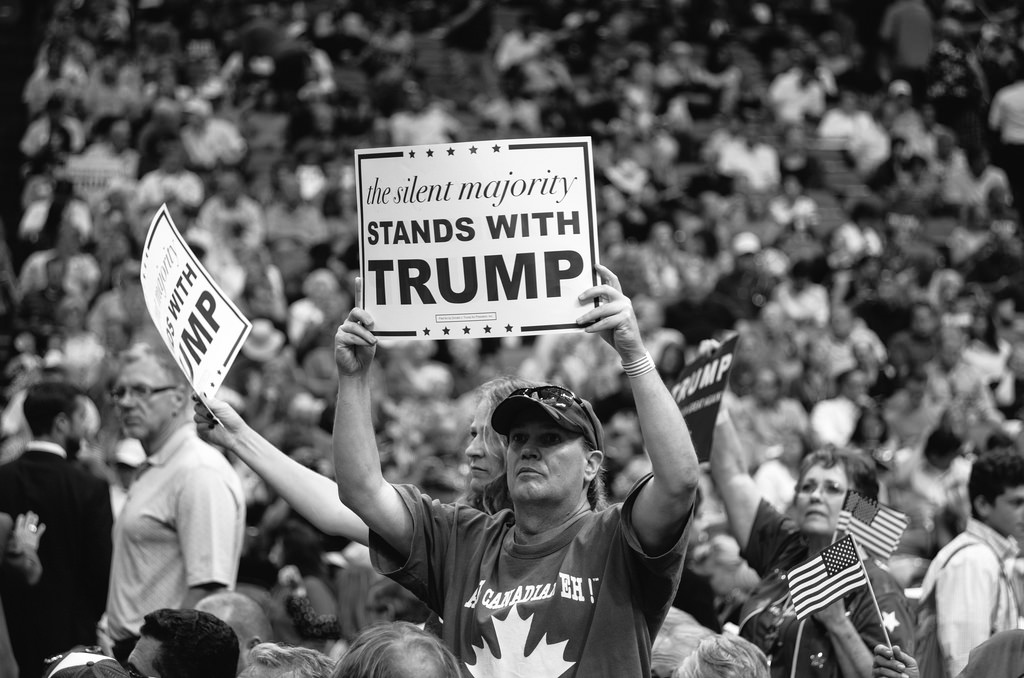Pax et Bellum | Alessandro Fava, Americas, Articles, International Politics, Joel Martinsson, Sofia Jarvis |
The 2012 Election was with American measurements a devastating loss for the Republican Party and its nominee Mitt Romney. In the wake of Romney’s failed presidential bid the Republican party presented an evaluation of what went wrong, labelling it “The Growth and Opportunity Project”. The report described the shrinking support for the Republican party from all minority groups across the country: George Bush for example managed to get 44 % of the votes from “Asian and other” group, whereas Mitt Romney only got 26 % (Barbour et al, 2013). The report further showed that minorities viewed the party as unfriendly towards them. The importance of changing this unfortunate view of the Republican Party was even recognized in the right wing sections of the party, seeing how for example the ultra conservative TEA-party leader Dick Armey claimed that: “You can’t call someone ugly and expect them to go to the prom with you. We’ve chased the Hispanic voter out of his natural home” (Barbour et al, 2013).
In multiple ways, Trump has taken a slightly different path than what the party was aiming for in 2012. He has, for example, called Mexican immigrants drug-lords and rapist in his first speech as a presidential candidate; claimed that there were a lot of “bad hombres” in United States; implied that a United States born judge could not be partial in a legal case against him because of his parents Mexican heritage, and the list goes on. Despite these comments and the way he has strayed from the traditional path of the Republican party, Trump has been neck and neck in many polls with Hillary Clinton. How could it be that Trump manages to gather such widespread support – and will a similar candidate be able to play the same political game in the future? In order to answer this overarching questions this article will look at three states and the demographic groups that potentially could influence the outcome of the election, ending with a discussion on what implications the changing demographics also can have on the political agenda for the world’s greatest military power – thereby making it a crucial subject to study for Peace-and Conflict scholars. Firstly, we will examine Utah and the religious right.The following chapter will discuss a group of growing political importance – the latinos. Finally the attention will be focused on Iowa and non-college educated white.
The religious right in Utah
One of the biggest surprises of this presidential campaign comes from the Rocky Mountains. Who would have bet on the fact that Utah, the most Republican state in the 2012 elections, would become a battleground state in 2016? As the latest opinion polls show, on the 8th of November there will be a three-cornered race in the Beehive State, which is a unique scenario in the entire country. In fact, together with Donald Trump and Hillary Clinton, relatively unknown Evan McMullin is also battling for the 6 state electoral votes where they are all currently polling at around the 30% of the votes. Although Trump still holds a slight advantage, it is still incredible that the Republican candidate is attracting half of the votes Mitt Romney received in the state in 2012.
However, at a closer look, the results of 2012 are misleading. Although Utah has been a Republican stronghold since the 1950s (except for the Democratic landslide in 1964) Mitt Romney outperformed all his historical counterparts in 2012 and the reason for this is relatively simple: Mitt Romney belongs to the Mormon church – and so do 62% of the Utahns (Census 2010). So, who are the Mormons? In a basic division of Christianity between Catholics, Eastern Orthodox and Protestants, they would form part of the latter. The religious group was founded in 1830 seeking to establish a New Jerusalem in American land. Their ideology including theodemocracy and polygamy as well as the existence of Mormon militias quickly created problems with other settlers and the federal U.S. government.
Today the Mormons still hold a high level of cohesion and organization. In fact, there are 16 Mormons in the U.S. Congress (14 Republicans and 2 Democrats, controlling all the Representatives districts in Utah and Idaho) and obviously the Governor of Utah (R) is also a member of the church. And, the third candidate Evan McMullin who describes himself as a conservative independent is, no surprises here, a Mormon too. Furthermore, according to the 2014 Pew Religious Landscape Survey, the Mormons were the most Republican religious group (Riess, 2016). This is probably not true anymore.
However, the problem Donald Trump and the Republican Party will have to face in the future is far bigger than just the Mormons. The last sex scandals that involved Trump opened a serious wound with the religious right, the core and the most faithful electorate of the Republican Party. Although Trump is leading among evangelical voters (these do not include Mormons) with 65%, it is less than the 79% that Romney enjoyed in 2012 (Posnan, 2016). It is worth remembering that Ted Cruz, Trump’s main opponent in the primaries, was the most outspoken religious candidate. Religious leaders and communities are divided on his candidacy and the problem could have consequences in the future (Posnan,2016). The first of these could be an internal fractionalization of the Republican Party along pro/against Trump lines even in its most cohesive constituency.
A fratricidal war inside the religious right would be a disaster for the Republican Party considering the political and cultural weight it has inside the GOP. With small but significant parts of the religious voters abstaining, the control of states, Representatives districts and Senators in Republican strongholds would be at risk. Will the religious right be able to survive as a cohesive group after Trump’s scandals? And finally, will Utah the the first and only battle for the Republican Party’s heart?

Latinos in Texas
Texas is the deep soul of the U.S. and at the same time something unique. It is the second biggest state in USA per population and the first for proportion of men serving in the army. More importantly, it sees itself as the guardian of traditional values and the essence of the eternal myth of the Frontier. Cattle, oil and technology were and are the basis of an economy as great as the Canadian GDP (Ward, 2016). In addition, its annexation opened the doors to the American conquest of the Far West. At the same time, it is the only American state with a past as an independent country (with its own Revolution against the Mexican rule) and has even in recent times flirted with the idea of becoming a separate entity (Dart, 2016). The Lone Star state is definitely something unique in American history and culture. As Sam Houston, one of the first English settlers in Texas, said “Texas can make it without the United States, the United States cannot make it without Texas”.
Right now this is truer than ever for the Republican Party. In fact, Texas has been a safe and solid Republican state since the 1980s. Even though in this presidential election there will probably be no surprises, the dramatic demographic changes, with the vertiginous growing of the latino community in the state, raises a question mark over the future cultural and political makeup of Texas and therefore of the entire United States. It is not the first time that Texas is in the frontline of demographic changes.
Even though it is too often forgotten, the majority of the white Americans do not have an English background. In fact, it is German. To have an idea of the importance of this ethnic group at the beginning of U.S. history, in 1794 the House of Representatives did not approve a bill proposing German as a second official language by just one vote. The relationship between the two ethnic groups was not very simple. The clash of ideology between them became evident during the Civil War and was especially prominent in Texas. The Germans living in West Texas (many of them political exiles from the failed European Revolutions in 1848) did not accept the decision of the English-ruled government of Texas to support the Confederation and some of them took up arms against the Texan government but were defeated. Only at this point, the process of assimilation of the Germans into the dominant W.A.S.P. (White Anglo-Saxon Protestant) identity could start. The process finally ended with the First World War and consequent war declaration to Germany when many streets, cities and families changed their German names into something more English (among them, future presidents Hoover, Eisenhower and Nixon).Will Texas be able to repeat the process, possibly without armed riots, with the latinos?
Although Donald Trump should not have big problems in winning the state, he might do it with one of the smallest margins in decades. It is very likely that the margin will be significantly reduced compared to the 16% Romney had in 2012 (57% vs 41%). Trump’s statements against Mexicans should reasonably have huge impact on a state where 38% of the population is Latino (Census 2010). The Latino vote is usually leaning Democrat (even though without the same loyalty as the Afro-Americans) but Trump could trigger new processes. The first effect may be increasing the Latino turnout, which is usually the weakness of the latino vote. In fact, even when they supported Obama in 2012, only the 31% of latinos went to the polls in Texas. Moreover, Trump’s declarations could have destroyed the political capital that Greg Abbott, current Republican Governor of Texas, built in the state election in 2014 when 44% of the Latinos voted for him (Rogers, 2016).
Looking to the future, the Democrats might have a good horse for the Texas state race in 2018: Julian Castro. Castro has several factors in his favor: being latino, a former mayor of San Antonio and also a member of the Obama cabinet. He might be able to boost latino mobilization and transform the next state race in a tight contest. “Houston, we have a problem” is probably more than a whisper in the Republican rooms. The probability of seeing another latino ruling Texas after more than 180 years has never been so high.This is also true for the next presidential elections. With its 38 electoral votes Texas is the only big state safely in the hands of the Republican Party. In fact, the other big states are either Democratic strongholds (such as California, New York or Illinois) or battleground states (such as Florida, Ohio and Pennsylvania). Future republican presidential candidates could in the future also have to consider Texas as yet another battle-grounds state – with the both political and economical expenses that follow with it.

Non-college-educated white voters in Iowa
Though both past and present presidential elections have shed light on the importance of the changing demographic of the U.S. and the increasing importance of the female and minority vote in American elections, Trump’s candidacy has brought out another demographic of voters whose voices have not been so clearly heard in past elections. These are the “missing white voters” – the group of working class non-college-educated whites who generally don’t vote. Trump’s candidacy, and everything that he stands for is predicted to motivate this population to vote more than in the 2008 and 2012 elections (Cohn, 2016)(Wasserman, 2016)(Wasserman et.al, 2016).
Iowa is an example of a state where the “missing white vote” could play an important role in the state results. Iowa is predicted to shift from a blue state to a red state precisely because of the population of non-college educated whites who will vote for Trump, but didn’t vote in the Romney/Obama election (and according to many polls, specifically because of the vote of male non-college educated whites). In Iowa, only 26% of the population has an education of a Bachelor’s degree or higher, and 96% of the population is white. This population of white non-college educated men in working class jobs, is a group that is dissatisfied with the current state and direction of the world, and Trump’s promise to “make America great again,” resonates particularly well with them.
Despite the blatant racism, sexism, and divisive rhetoric that has been part of the Trump campaign, it is true that circumstances like the economic crisis and globalization have made life hard for the working class throughout America. Though, the current unemployment rate is at an all time low since the 2008 economic crisis, not everyone has felt the impact of the recovery. In a world that is quickly changing, it is not a great time to be a farmer in Iowa. As Nate Cohn wrote in his New York Times article, “many white working-class men do not feel privileged — not in a society where power and status are often vested in well-educated elites along the coasts. From their standpoint, the Democratic Party might look like an identity politics patronage system — affirmative action, immigration, “political correctness,” gender or whatever else” (Cohn, 2016).
Though the causes that Trump chooses to blame for the discontent in the working class may be all wrong, he has tapped into the existence of grievances that feel very real to the non-college-educated white population. As most people are likely to do, this population in Iowa will vote for the candidate they believe is most likely to help improve their situation. Today, that candidate is Trump. Trump will likely win Iowa, because of this group of voters. What will happen with the non-college-educated white vote in other states remains to be seen, but have the potential to hugely impact the results in this election, not to mention in future elections.
Donald Trump’s success from the primaries all the way through today, just days before the election, has caught many off guard and has, for now, sent the writers of the Growth and Opportunity Project back to their desks. They do however not necessarily need to stay behind their desks for too long, since the changing demographic of identity groups could prove them right in a not too far future. Since it is no secret that identity in many different forms plays a role in people’s political allegiance in American elections, and a closer look at the states of Texas, Utah, and Iowa provides a snapshot of the specific ways that identity will play a role in this week’s election: where latinos are changing Texas from an overwhelmingly Republican state; there is a possibility that a third party candidate might win Utah due to religion; and the state of Iowa will likely be red instead of blue due to a large group of first time non-college educated white voters.
In a country that has, in the past, prided itself on being a “melting pot” of identity groups, this election, perhaps more than any other, seems to show that there are still huge divides between identity groups in the U.S. Everyone wants representation in politics, and more so than in other elections, people are afraid of what they have to lose to other identity groups. What will happen in this week’s election remains to be seen, but that there is tension between identity groups regarding who will hold political power in the U.S. is undeniable, and will continue to affect party politics regardless of who the next president of the United States will be.
Alessandro Fava, Joel Martinsson, and Sofia Jarvis
Alessandro, Joel and Sofia are students at the Master Programme in Peace and Conflict Studies at Uppsala University.
The blog is run independently of the Department of Peace and Conflict Research in Uppsala. The Pax et Bellum Editorial Board oversees and approves the publication of all posts, but the content reflects the authors’ own perspectives and opinions.
REFERENCES
- Alberta, T. (2016, October 24). The “Diploma Divide” Explains Why Iowa Looks Better
for Trump Than New Hampshire. Retrieved October 30, 2016, from National
Review:https://www.nationalreview.com/magazine/2016-10-24-0100/trump-clinton-voters-education - Barbour, H et al. (2013). Growth and Opportunity Project. Retrieved October 25, 2016 from: http://goproject.gop.com/
- Bump, P. (2015, April 3). What America will look like in 2050, in 4 charts. Retrieved
November 1, 2016, from The Washington Post: https://www.washingtonpost.com/news/the-fix/wp/2015/04/03/what-america-will-
look-like-in-2050-less-christian-less-white-more-gray/ - Bycoffe, A., & Wasserman, D. (2016, October 5). What Would It Take to Turn Blue
States Red. Retrieved October 29, 2016, from Five Thirty Eight:
http://projects.fivethirtyeight.com/2016-swing-the-election/ - Cohn, N. (2016, July 25). The One Demographic That is Hurting Hillary Clinton.
Retrieved November 5, 2016, from The New York Times:
http://www.nytimes.com/2016/07/26/upshot/the-one-demographic-that-is-hurting-
hillary-clinton.html - Dart, T. (2016, June 19). “Why not Texit?”: TExas nationalists look to the Brexit vote for
inspiration. Retrieved October 31, 2016, from The Guardian:
https://www.theguardian.com/us-news/2016/jun/19/texas-secession-movement-
brexit-eu-referendum - Fabbri, D. (2014, May 14). La Guerra al Kaiser Liquida L’america Tedesca e vara la
superpotenza. Retrieved October 28, 2016, from Limes Online:
http://www.limesonline.com/cartaceo/la-guerra-al-kaiser-liquida-lamerica-
tedesca-e-vara-la-superpotenza - Growth and Opportunity Project. (2012). Growth and Opportunity Project. Republican Party.
- Krogstad, J. M., & Lopez, M. (2014, November 7). Hispanic Voters in teh 2014 Election.
Retrieved November 3, 2016, from PewResearch Center: Hispanic Trends:
http://www.pewhispanic.org/2014/11/07/hispanic-voters-in-the-2014-election/ - Mueller, M. P. (2016, August 4). Why Mormons Don’t Like Trump. Retrieved October 29,
2016, from Slate: http://www.slate.com/articles/news_and_politics/politics/2016/08/why_mormons
_don_t_like_donald_trump.html - Posner, S. (2016, October 19). The Religious Right’s Trump Schism. Retrieved October
30, 2016, from The New York Times:
http://www.nytimes.com/2016/10/19/opinion/campaign-stops/the-religiousrights-trump-schism.html?_r=2 - Schaul, K., & Schwarz, H. (2015, September 22). Religions of our representatives.
Retrieved November 1, 2016, from The Washington Post:
https://www.washingtonpost.com/graphics/politics/114th-house-
religions/?tid=a_inl - Riess, J. (2016, February 23). Mormons now most Republican religious group in
America. Retrieved October 20, 2016, from Religion News:
http://religionnews.com/2016/02/23/mormons-now-republican-religious-group-
america/ - Rogers, M. B. (2016, April 21). What’s a Texas Democrat Gonna Do? Retrieved October
28, 2016, from Huffington Post: http://www.huffingtonpost.com/thought-
matters/whats-a-texas-democrat-go_b_9742102.html - The Economist. (2016, September 13). Why voters in Iowa are leaning towards Donald
Trump. Retrieved November 4, 2016, from The Economist:
http://www.economist.com/blogs/democracyinamerica/2016/09/flipping-states - The Economist. (2015, March 14). America’s Hispanics: from minor to major. Retrieved
October 28, 2016, from The Economist: http://www.economist.com/news/special-
Report/21645996-one-american-six-now-hispanic-up-small-minority-two-
generations-ago - Ward, A. (2016, April 25). How Does Your State’s Economic Output Compare to Foreign
Countries? Retrieved November 3, 2016, from Mental Floss:
http://mentalfloss.com/article/78993/how-does-your-states-economic-output-
compare-foreign-countries - Wasserman, D. (2016, September 29). “Missing” White Voters Could Elect Trump. But
First They Need to Register. Retrieved November 2, 2016, from FiveThirtyEight:
http://fivethirtyeight.com/features/missing-white-voters-could-elect-trump-but-
first-they-need-to-register/ - Wasserman, D., Fischer-Baum, R., & King, R. (2016, October 12). Where Do Clinton
and Trump Have the Most Upside? Retrieved October 31, 2016, from Five Thirty Eight: http://projects.fivethirtyeight.com/clinton-trump-vote-maps-2016/

